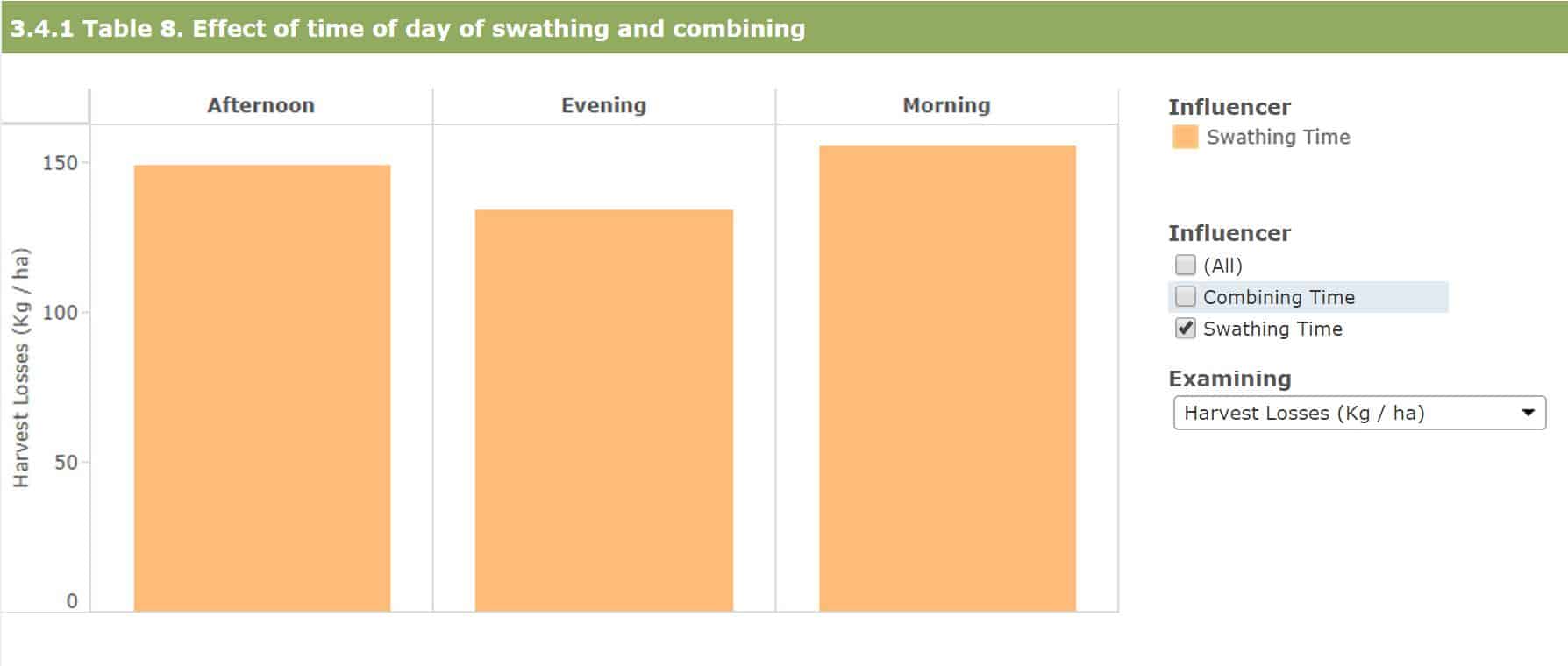Every year growers question the ideal timing of swathing their canola fields. If favourable conditions aligned (early seeded crops, avoided insect, disease and weather damage, had moderate temperatures through the flowering period with adequate moisture and had 7-10 plants/ft^2 stands), then the generic message of swathing when 60% of the seeds on the main stem are showing some colour change would work perfectly for their fields with uniform maturity.
However, growing seasons are much more interesting than that. So there are agronomic variations and adaptations that need to be made according to the conditions this year. Here are a few items to consider:
1) When judging maturity, look at seed colour change (SCC) and not crop colour change, as they are not the same. From the road the pods may look more mature than the seeds inside the pods actually are, or vice versa.
2) It is debatable whether the time of day is important to swathing. It is best to cut at low temperature and high moisture for ideal curing, but this choice may not be quite as critical for locking in green seed colour as originally thought. Still, it is suggested to avoid the hottest, driest part of the afternoon, since this may cause increased shattering.
According to Rob Gulden’s recent study, however, there were no significant differences in total harvest losses attributed to the time of day that canola crops were swathed at (see graph below). Find out what other factors are affecting harvest losses in the Canadian Prairies here.
At any time of day, checking to make sure your seeds aren’t shelling out while swathing, is useful. Or if you want to err on the side of caution, just avoid swathing in the afternoon.
3) On a related note, with high temperatures in the forecast, always remember that crops may mature faster in the heat than expected, so keep an eye on them. You may be in the field sooner than planned!
4) Harvest management decisions become more complex when canola stands are not uniform. In some fields, canola plant populations and plant growth stages are highly variable due to stresses and replanting/variable emergence early in the growing season. How do you manage this field variability to optimize yield? This is a season where the “plasticity” of canola may provide some economic protection.
Typically the majority of the canola yield potential comes from pods on the main raceme. In some fields, the main raceme is now mature and pods have started to senesce or shatter with seed loss occurring, while the pods/seeds on the side branches are still immature and need many more days before they are ready to swath/straight cut. Failure to allow these seeds to ripen properly will result in high green seed counts and lost yield potential as well.
Due to stress, the pods/seeds on the main raceme may have ripened prematurely, the number of seeds/pod was lower than average and the seed weight was light due to incomplete or reduced seed filling time. If the scenario above describes your canola field, it may be prudent to let the main raceme shatter and time your swathing or straight cutting in order to capture the yield potential from the side branches on the plant. Timing then shifts from focusing on the percentage of SCC in the seeds of the branches versus the main raceme.
There is not much research that describes how much yield is lost/gained under this scenario and what amount of maturity difference is needed between main raceme and side branches to support a decision, so growers will have to rely on their experience or experience of CCC and industry agronomists to determine whether they should “ignore” the main raceme and focus on capturing the yield on the side branches.
This year already has potential for higher green seed content due to immature branches on plants and highly variable crops. So there may be one more reason to wait an extra couple days if shattering is not occurring on the main stem. When checking the crop, any seeds that fail the “firm enough to roll” test will likely contribute to green seed count or blow out the back of the combine. If a significant part of your fields yield is in the youngest pods rather than the main stem – waiting may be the best decision for you. Also remember that each field will need to be assessed separately to determine where the majority of the yield will come from.
5) When you are assessing the crop, be sure to get to several spots in the field to make this decision. Pull up some plants and have a close look at their seeds to determine the crop stage. While there, you can also check out a few other things once the crop are already pulled.
6) Incidentally, this year may also be the year to scribble down some notes about how your variety has performed under this season’s conditions- especially if it has a shatter-resistance trait. Is it performing as you expected? Make a few notes for future reference.
7) Even when swathing, Pre-Harvest Intervals (PHIs) need to be considered. PHIs will ensure that residue levels are below acceptable MRLs, ensuring that your grain will have access to a larger number of export and import markets.
8) Listen to two experts discuss harvesting in highly variable fields here
https://soundcloud.com/albertacanola/planning-for-harvest-with-highly-variable-fields


